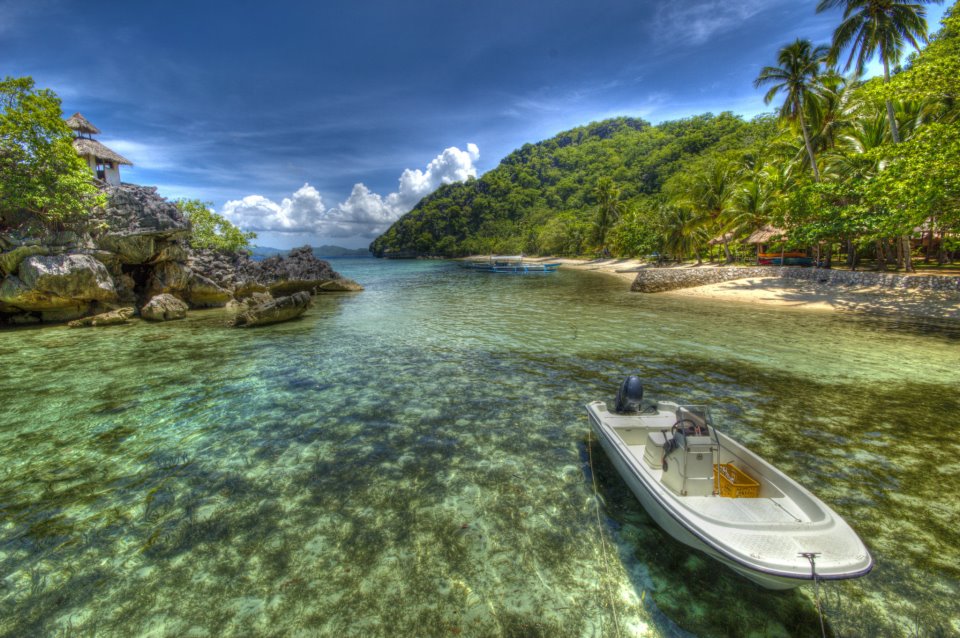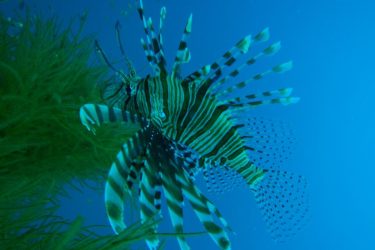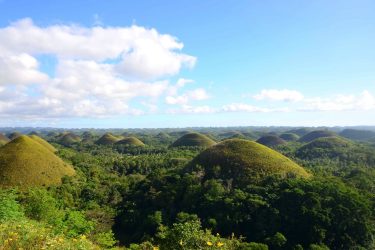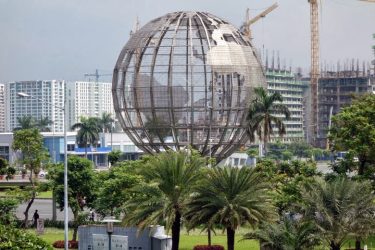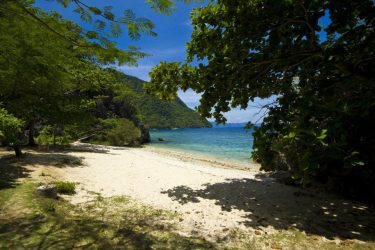Southeast Asian archipelago of more than 7,000 islands known as the Philippines is a tropical paradise with a wide variety of landscapes, lively cultures, and friendly people. The Philippines has plenty to offer every kind of traveler, from lush mountains and vibrant cities to immaculate beaches and clear waters.
Beautiful Beaches: The beaches in the Philippines are among the best in the world. Visitors are drawn to Boracay by its bright nightlife and fine white sands, which have earned it the title of best island in the world. Known as the “Last Frontier,” Palawan is home to some of the world’s most beautiful scenery, such as the stunning El Nido and Coron, which are renowned for their limestone cliffs and vibrant coral reefs.
Cultural Heritage: Visit historic locations such as Manila’s Intramuros, a walled city that dates back to the Spanish colonial era, to learn more about the rich cultural tapestry of the Philippines. The Philippines’ Baroque Churches, which include Paoay Church and San Agustin Church, are listed by UNESCO as examples of the nation’s colonial past.
Tropical Adventures: The Philippines provides a variety of outdoor activities for those who enjoy the outdoors. For some of the best diving in the world, enter the UNESCO World Heritage Site known as Tubbataha Reefs Natural Park. Two must-see natural wonders are the Banaue Rice Terraces, sometimes referred to as the “Eighth Wonder of the World,” and the Chocolate Hills in Bohol, a group of cone-shaped hills.
Filipino Cuisine: Savor the delicious fusion of flavors brought about by American, Chinese, Spanish, and Malay cultures. Savor the sweetness of halo-halo, a cool shaved ice dessert, or sample the famous adobo, a savory and slightly tangy meat dish.
Festivals and Celebrations: Take part in the colorful celebrations that highlight the rich customs of the Philippines. A few of the vibrant and happy occasions that happen all year round are Sinulog in Cebu, Ati-Atihan in Aklan, and Pahiyas in Quezon.
Friendly Locals: The Philippines’ most valuable resource is its people, who are hospitable and kind. Filipinos are renowned for their “kapwa,” or warm hospitality, which makes travel an unforgettable experience.
In conclusion, the Philippines has a wide variety of attractions, so any kind of traveler will be able to find something to suit their interests, be it tropical adventures, cultural exploration, or just lounging on gorgeous beaches. In this article, we will give you our list of things that you should do and see when you visit the Philippines.
Visit Boracay Island
The tiny island of Boracay, located in the center of the Philippines, is well-known for its pristine white sand beaches, glistening waters, and exciting nightlife. Millions of tourists visit Boracay every year, which is a well-known tourist destination situated in the center of the Visayan region.
White Beach: Spanning four kilometers on the western side of the island, White Beach is the jewel in the crown of Boracay. The sand is fine and immaculate. White Beach, which is separated into three stations, provides a range of experiences. While Station 2 is the busy center with lots of shops, restaurants, and a lively nightlife, Station 1 is recognized for its opulent resorts and more sedate ambience. The more sedate end is Station 3, ideal for people looking for a more relaxed atmosphere.
Water Activities: There are a variety of water sports available for those who enjoy the blue waters of Boracay. The island offers activities for all kinds of interests, from serene paddle boarding and island hopping to exhilarating water sports like windsurfing and kiteboarding at Bulabog Beach.
Puka Shell Beach: Located on the island’s northernmost point, Puka Shell Beach provides a calm setting away from the crowds for those seeking a more private getaway. The beach is well-known for its gorgeous Puka shells and rougher white sand.
Beautiful Sunsets: White Beach is the ideal location to take in the breath-taking sunsets that Boracay is known for. These sunsets happen every day. Both locals and visitors congregate on the shore to watch the sun set and watch its vivid colors paint the sky.
Diverse Culinary Scene: The culinary scene in Boracay is just as varied as the people who visit. There’s something for every taste, from high-end restaurants serving international and Filipino cuisine to beachside barbecues serving freshly caught seafood.
Lively Nightlife: Boracay has a thriving nightlife scene that comes to life as the sun sets. Live music, themed parties, fire dancers, and beachfront bars and clubs along Stations 1 and 2 create a vibrant atmosphere that lasts long into the night.
Basically, Boracay is a tropical paradise that combines breath-taking scenery, thrilling water sports, a thriving local economy, and exciting entertainment, creating the perfect atmosphere for both adventure seekers and sun worshippers.
Diving and Snorkeling In the Philippines
The Philippines offers some of the most vibrant and diverse marine ecosystems in the world, making diving there an enthralling experience. The Philippines is a paradise for both beginning and seasoned divers, offering warm waters, abundant underwater biodiversity, and crystal-clear conditions.
Tubbataha Reefs Natural Park: Located in the Sulu Sea, this isolated marine sanctuary has been recognized as a UNESCO World Heritage Site. Divers can see enormous underwater walls, immaculate coral reefs, and an astonishing variety of marine life, such as sharks, rays, and several kinds of vibrant fish.
Another diving treasure is Apo Reef Natural Park, which is home to the second-largest contiguous coral reef system in the world. Situated in Mindoro, this underwater photographer’s and marine enthusiast’s paradise is home to colorful coral gardens and a variety of marine life.
Malapascua Island: Malapascua Island in Cebu is a well-liked spot for encounters with thresher sharks. These magnificent animals are drawn to the Monad Shoal, which provides exceptional diving opportunities.
Coron Bay: Located in Palawan, Coron Bay is well-known for both its abundance of World War II shipwrecks and its breathtaking underwater scenery. These underwater artefacts are now artificial reefs that are brimming with marine life and offer exciting diving experiences.
Anilao: A favorite spot for macro photographers, Anilao in Batangas is referred to as the “epidemic center of marine biodiversity” in the Coral Triangle. It is a sanctuary for people who are enthralled with the smaller marvels of the underwater world because of its vibrant coral gardens and variety of creatures.
Negros Oriental’s Dauin is a muck diving haven. Divers who explore black sandy slopes come across a variety of unusual creatures, such as frogfish, seahorses, and other uncommon marine species.
Diving in the Philippines promises an immersive and unforgettable underwater experience, whether you’re looking for colorful coral reefs, exhilarating shark encounters, or historic shipwreck exploration.
Visit the Chocolate Hills
Situated on the island of Bohol, the Philippines’ Chocolate Hills are a geological marvel. This unique terrain is made up of more than 1,200 cone-shaped hills dispersed over an area of about 50 square kilometers. These hills are especially fascinating because of their uniform size and shape, which gives them the delicious name of “chocolate kisses” during the dry season.
The green grass covering the hills appears to be a vast field of chocolate mounds during the dry season, when it turns brown. Although the precise process of the Chocolate Hills’ formation is still a mystery to geologists, local legends provide creative explanations, such as giants hurling rocks at one another.
A wide-angle view of these natural marvels can be obtained at Carmen’s Chocolate Hills Complex, a well-liked observation point. Ascending to an observation deck allows visitors to take in the bizarre scenery that stretches out before them. Witnessing this captivating and distinct geological phenomenon, tourists from all over the world flock to the Philippines to see the Chocolate Hills, which have grown to become one of the most recognizable and frequently photographed natural landmarks in the country.
Visit the Lively City of Cebu
One of the liveliest and most culturally diverse islands in the Philippines, Cebu, provides visitors with a wide variety of experiences. The province, which includes Cebu Island and the smaller islands that surround it, is well-known for its stunning beaches, interesting historical sites, and bustling cities.
Islands and Beaches: Cebu is home to a multitude of gorgeous beaches, each possessing a unique charm. Beach lovers can find their paradise on Bantayan Island, with its powdery sands, or at Moalboal, with its vibrant underwater life. Malapascua Island is well known for its thresher shark diving, drawing tourists from all over the world who enjoy this kind of diving.
Historical Landmarks: The provincial capital of Cebu City is a historical treasure trove. The Magellan’s Cross, which Ferdinand Magellan planted in 1521, is a reminder of Cebu’s colonial past. History buffs should also visit the Basilica Minore del Santo Niño, which is home to the oldest religious relic in the Philippines.
Sinulog Festival: Celebrate the Santo Niño with bright processions, traditional dances, and colorful parades during this January celebration. Both locals and visitors are drawn to this magnificent celebration, which provides a singular window into Cebuano culture.
Local Cuisine: With a wide variety of restaurants, Cebu is a foodies’ paradise. Roasted pig, or lechon, is a regional specialty that has won praise from all over the world. Discovering the restaurants and markets in the area will expose tourists to a wide range of delectable foods, both sweet and savory.
Travelers searching for a comprehensive and remarkable experience in the Philippines will find Cebu to be an enthralling destination due to its dynamic blend of natural beauty, historical significance, and vibrant culture.
Visit Manilla the Capital of the Philippines
The vibrant capital of the Philippines, Manila, successfully combines modernity, culture, and history. Here’s a taste of what makes travelling to Manila so exciting and rewarding:
Historical Landmarks: Due to Manila’s rich past, it is imperative that you visit some of its historical sites. The “Walled City,” Intramuros, is home to historical sites like San Agustin Church and Fort Santiago, both of which are UNESCO World Heritage Sites, as well as Spanish colonial architecture. Rizal Park honors Jose Rizal, the national hero, with gardens and monuments.
Cultural Districts: Visit the Cultural Centre of the Philippines (CCP) complex to get a taste of the regional arts and customs. The Philippine International Convention Centre (PICC), the Metropolitan Museum of Manila, and performances at the CCP are all nearby.
Shopping and Entertainment: Manila has a wide range of entertainment options. For a combination of dining, entertainment, and retail therapy, head to the Mall of Asia, one of the biggest shopping centers in Asia. Resorts World Manila is a center of entertainment featuring theatres, a casino, and a vibrant nightlife.
Fascinating Museums: Visit the museums in Manila to discover the history and culture of the Philippines. The National Museum complex, which houses the National Museum of Natural History, National Museum of Anthropology, and National Museum of Fine Arts, displays the rich cultural legacy of the nation.
Culinary Delights: Foodies will love Manila’s culinary scene. The city offers a wide variety of culinary experiences, from high-end dining in Makati to street food in Binondo, the oldest Chinatown in the world. Try some of the regional specialties, such as halo-halo, sinigang, and adobo.
Lively Street Life: Discover the vibrant street life in areas like Bonifacio Global City (BGC) and Makati, where you can discover a variety of boutiques, cafes, and street art. Savor the lively nightlife of Poblacion, which is well-known for its unique eateries and bars.
With its alluring fusion of culture, history, and modern flair, Manila welcomes tourists to discover its many facets and create lifelong memories in this vibrant city.
Visit Palawan Island
Known as the “Last Frontier” of the Philippines, Palawan is a captivating island province that is well-known for its unspoiled natural beauty. Here’s a taste of what makes a trip to Palawan incredibly memorable:
Gorgeous Landscapes: With its stunning limestone cliffs, turquoise lagoons, and dense mangrove forests, Palawan is a nature lover’s dream come true. Top attractions include Coron, which is renowned for its glistening lakes, and El Nido, a group of limestone islands.
Underground River: The Puerto Princesa Underground River is located in the Puerto Princesa Subterranean River National Park, which is also home to one of the New Seven Wonders of Nature and a UNESCO World Heritage Site. Discover this captivating river that meanders through a network of underground caverns adorned with striking stalactite and stalagmite formations.
Pristine Beaches: Palawan has some of the most stunning beaches on the planet. Beaches like Nacpan Beach and Las Cabanas Beach offer long stretches of white sand and pristine waters. Malcapuya Island in Coron is an additional gem, boasting bright coral reefs and pristine white sand.
Marine Life and Coral Reefs: Palawan is a marine biodiversity hotspot. Explore Bacuit Bay in El Nido by snorkeling or diving to see the diversified marine life, including colorful fish and coral gardens, as well as turtles. A UNESCO World Heritage Site, Apo Reef is a diver’s paradise.
Cultural Immersion: In addition to discovering the natural treasures, tourists can interact with the indigenous way of life. The Tagbanua and Batak indigenous communities in Palawan offer cultural experiences that shed light on their customs and way of life.
Calauit Safari Park: Go to Calauit Safari Park in Busuanga, Coron, for an exceptional wildlife experience. Numerous African and endemic Palawan species can be found in this wildlife sanctuary, which provides a unique safari experience.
Travelling to Palawan is like entering a dreamy tropical paradise, with breath-taking natural features revealed at every turn. No wonder, everyone who sets foot on its shores is enthralled.
Discover the Banaue Rice Terraces
The Banaue Rice Terraces, sometimes called the “Eighth Wonder of the World,” are a breath-taking example of the Ifugao people of the Philippines’ inventiveness and agricultural prowess. A brief overview of what makes a trip to the Banaue Rice Terraces a visually and culturally stimulating experience is provided here:
Ancient marvels: The Banaue Rice Terraces, which were carved more than 2,000 years ago into the Ifugao Mountains, are a testament to the Ifugao people’s remarkable engineering prowess. The terraces are an incredible example of sustainable agriculture; they resemble enormous steps that reach upward towards the sky.
Cultural Heritage: The terraces are an essential component of Ifugao culture and not just a remarkable example of agricultural engineering. Given how deeply rooted rice cultivation is in the Ifugao people’s traditions, they serve as a reflection of the harmonious relationship that exists between them and the land.
Scenic Beauty: Mist-covered Mountains and verdant foliage surround the terraces. During the planting season, when the paddies are submerged in water and the surrounding landscape is reflected, the panoramic views are especially breath-taking.
The Batad Rice Terraces: One of the highlights of the Banaue region is the Batad Rice Terraces. These terraces are particularly lovely, and they resemble amphitheatres. Nestled in the Batad Village, the Tappiyah Falls adds to the charm by providing visitors with a cool respite.
Trekking Adventures: Trekking through picturesque trails is a common part of exploring the Banaue Rice Terraces. This gives visitors the chance to see the terraces up close and engage with the local people. The history of the terraces and the Ifugao way of life are told by the guides.
A trip through time to the Banaue Rice Terraces provides a deep connection to the Philippines’ rich agricultural and cultural legacy. The terraces are a living example of how an ancient civilization practiced sustainability.
Visit Vigan City
Situated in the Philippines’ Ilocos Sur province, Vigan City is a well-preserved Spanish colonial town and a UNESCO World Heritage Site. Here’s a taste of what makes a trip to Vigan City so alluring:
Historic Spanish Architecture: Vigo is known for its exquisite examples of Spanish colonial architecture that have been preserved. The main thoroughfare, Calle Crisologo, is flanked by ancestral homes with massive wooden doors, cobblestone streets, and red-tiled roofs that offer a quaint window into the past for those who visit.
Calle Crisologo: The main thoroughfare of Vigan’s historic district is also referred to as Mena Crisologo Street. Walking down Calle Crisologo is like taking a trip down memory lane—horse-drawn carriages, or kalesas, transport tourists among buildings that date back hundreds of years.
Vigan is a UNESCO World Heritage Site: This remarkable blend of European colonial architecture and Asian building design and construction is how Vigan got its UNESCO designation. The city is a living museum that takes visitors to a bygone era because it has been able to preserve its distinct cultural blend.
Syquia Mansion: During the Spanish colonial era, the elite Filipinos lived in this historic house that is now a museum, providing insights into their way of life. Explore the beautifully conserved chambers and antiques that highlight the grandeur of the past.
Delectable Local Cuisine: Vigo is renowned for its exquisite local cuisine as well. Taste authentic Vigan empanadas, longganisa (sausage), and other local delicacies. The cuisine enhances the cultural experience, enabling guests to enjoy Vigan’s culinary and visual delights.
Baluarte: Owned by local politician Chavit Singson, Baluarte is a private zoo for animal enthusiasts. The zoo provides an opportunity to view a variety of animals, such as exotic birds, reptiles, and tigers.
A trip to Vigan City is like visiting a time capsule, with the splendor of the Spanish colonial era preserved and the rich cultural legacy of the Philippines on display everywhere you look.
Visit Sagada
Sagada, a destination that captivates travelers with its breath-taking landscapes, rich cultural heritage, and unique experiences, is tucked away in the Philippines’ Cordillera Mountains. Here’s a taste of what makes travelling to Sagada such an amazing experience:
Stunning Scenery: Sagada is encircled by stunning scenery, which includes terraced rice fields, lush greenery, and towering limestone cliffs. Adventurers and lovers of the natural world will find paradise in the tranquil beauty of the valleys and mountains.
Hanging Coffins: The hanging coffins are one of Sagada’s most notable features. This old burial custom involves burying the dead in coffins positioned in caves or on cliffs. The custom, which is an intriguing part of Sagada’s cultural legacy, is said to help the deceased become more intimate with their ancestors’ spirits.
Trek to Echo Valley and Hanging Coffins: To get a close-up look at the hanging coffins, visitors can set out on a trek to Echo Valley. Travelling through picturesque scenery and visiting the grave sites makes for an immersive cultural experience.
Exploration of Sumaguing Cave: Spelunking adventures are popular in Sumaguing Cave, one of Sagada’s many cave systems. Beautiful rock formations, underground rivers, and unusual limestone structures can all be found inside the cave, making for an exciting and unforgettable visit.
Kiltepan Viewpoint’s Rice Terraces: Kiltepan Viewpoint offers a comprehensive perspective of Sagada’s rice terraces and is a must-visit location. Sunrises over the terraced fields are incredibly beautiful and provide a calm and serene beginning to the day.
Sagada Pottery and Weaving: The town is home to talented craftspeople that work in the age-old arts of weaving and pottery. Visitors can purchase one-of-a-kind handcrafted souvenirs as a keepsake of their trip to Sagada and witness these crafts being practiced.
Culinary Treats: Sagada provides a range of regional cuisine, such as pinikpikan, a traditional chicken soup, and their own take on strawberry and lemon pies. Discovering the regional food scene enhances the overall Sagada experience in a delightful way.
Travelling to Sagada offers the ideal fusion of adventure, natural beauty, and cultural richness, leaving a lasting impression on those who experience its wonders.
Visit the Stunning Siargao Island
Known for its world-class surfing, unspoiled natural beauty, and laid-back island vibes, Siargao Island is situated in the Philippine Sea. Here’s a taste of what makes a tropical getaway to Siargao so unforgettable:
Surfing Paradise: Known as the “Surfing Capital of the Philippines,” Siargao is a popular destination for surfers worldwide. Strong barrels are available at the well-known surf break Cloud 9, which is a must-see for wave beginners and experts alike.
Sugba Lagoon: From Del Carmen, a quick boat ride brings you to Sugba Lagoon, a hidden gem encircled by turquoise waters and mangrove forests. Adventure seekers can enjoy cliff jumping, kayaking, and paddle boarding while taking in Siargao’s natural splendour.
Magpupungko Rock Pools: These breath-taking natural wonders of crystal-clear tidal pools surrounded by unusual rock formations are revealed at low tide. It’s the perfect place for swimming, tanning, and taking pictures that look good on Instagram.
Beaches with palm trees: Siargao is home to immaculate white sand beaches with coconut palms lining the shore, providing the ideal environment for leisure and water sports. Well-known beaches with picture-perfect scenery include Naked Island and General Luna.
Island Hopping to the Guyam, Daku, and Naked Islands: Take a trip to the neighbouring Guyam, Daku, and Naked Islands by taking an island hopping excursion. From calm beaches to colourful coral reefs, every island has its own unique charm, making for a varied and rewarding experience.
Sohoton Cove National Park: This captivating location with entrancing caves, lagoons, and a Jellyfish Sanctuary is reachable from Siargao by boat. While paddling through the mangrove forests, visitors can take in the striking limestone formations.
Local Cuisine and Culture: Savour the mouth-watering Filipino and seafood dishes and engage with the amiable locals to fully immerse yourself in the laid-back island culture. If you want to sample local cuisine, you really must go to the General Luna night market.
Siargao Island is a popular travel destination for people looking for a tropical paradise and outdoor adventures because of its captivating natural wonders, lively culture, and laid-back vibe.
Festivals in the Philippines
The Philippines is well known for its colorful and varied celebrations, which all contribute to the rich cultural mosaic of the archipelago. Celebrated with vibrant parades, traditional dances, and exciting street performances, these events attract both residents and visitors, providing an insight into the nation’s distinct history. The following are a few well-known Philippine festivals:
Cebu’s Sinulog Festival: One of the nation’s most well-known celebrations, Sinulog takes place in Cebu City each January. The festival, which revolves around the Santo Niño, includes a large street parade in which participants dress in colourful costumes and dance the Sinulog, a lively and rhythmic tribute to the island’s acceptance of Christianity and pagan past.
Kalibo, Aklan hosts the Ati-Atihan Festival, which is referred to as the “Mother of All Philippine Festivals.” It is typically held in January. As they embody the devotion to the Sto. Niño, participants dance to the beat of tribal drums while donning colourful indigenous costumes and having their bodies covered in black soot.
Panagbenga Festival (Baguio): Every year in February, Baguio City, known as the “Summer Capital of the Philippines,” hosts the Panagbenga flower festival. The festival draws both locals and visitors to enjoy the beauty of blossoms with its colourful flower floats, street dancers, and grand parade.
Pahiyas Festival (Lucban, Quezon): This vibrant harvest festival takes place in Lucban, Quezon, every May. As a token of gratitude for a plentiful harvest, houses are decorated with vibrant kiping, or decorative rice wafers.
MassKara Festival, Bacolod: Held in October, Bacolod City, also referred to as the “City of Smiles,” is home to the MassKara Festival. A joyful and festive atmosphere is created by participants dancing in the streets while donning colourful masks and costumes.
For those who are fortunate enough to witness them, these festivals provide an immersive and lively experience that epitomizes the Filipino love of celebration, cultural pride, and the passionate expression of gratitude.






